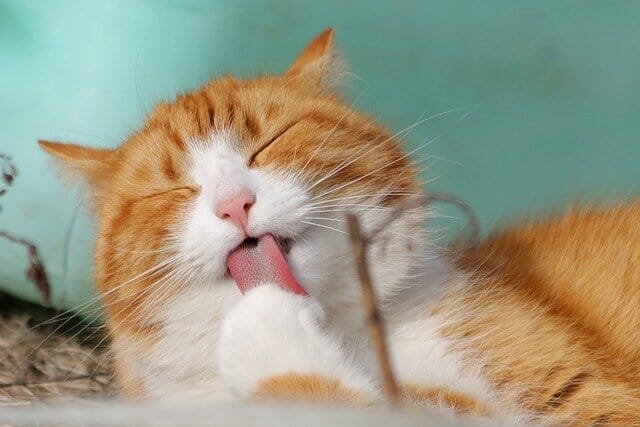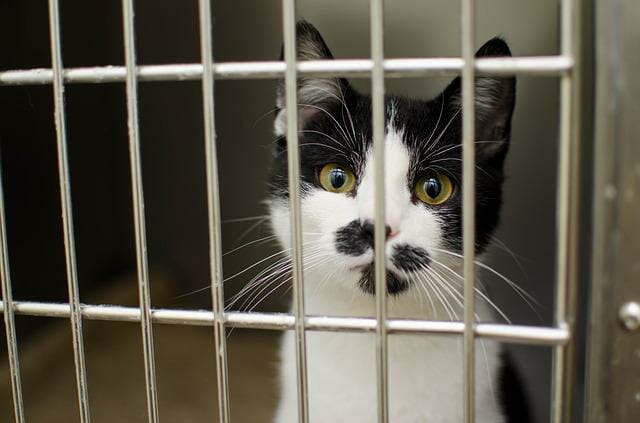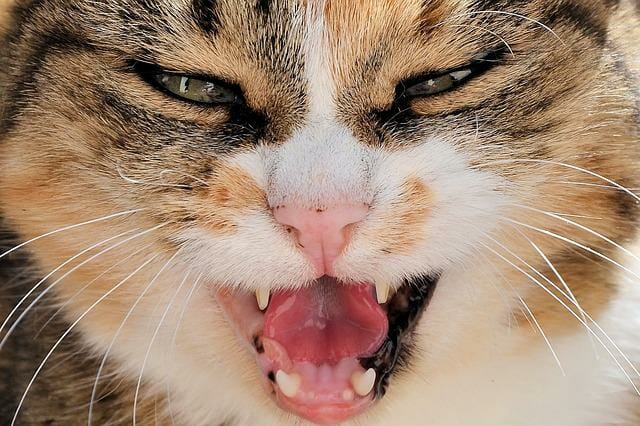How To Know If A Cat Has Rabies: Signs Of Rabies In Cats And How To Manage This Virus
It is not easy to determine if a cat has rabies, as the early symptoms of the disease can be similar to those of other illnesses. However, some signs to watch for may indicate rabies, such as changes in behavior, excessive drooling, difficulty swallowing, paralysis, and increased vocalization.
If you suspect that your cat has rabies, it is crucial to seek veterinary care immediately. Rabies is a serious disease that can be fatal if left untreated. Additionally, if you have been bitten or scratched by a cat, seek medical attention immediately, as rabies can be transmitted through the saliva of an infected animal.


Table of Contents
Signs of Rabies in Cats
Changes in Behavior
The virus affects the brain and nervous system when a cat contracts rabies. This can cause a range of behavioral changes, depending on the stage of the disease. For instance, a normally friendly or docile cat may become aggressive when infected with rabies. They may hiss, growl, or lunge at people or other animals for no apparent reason.
A cat with rabies may also become restless or anxious, pacing or wandering around the house. As the disease progresses, cats may become disoriented, confused, or unaware of their surroundings.
Rabies can also disrupt a cat’s normal sleep patterns, causing them to sleep more or less than usual. In severe cases of rabies, cats may experience seizures, indicating that the disease progresses rapidly.
It is critical to note that changes in behavior alone do not necessarily mean that a cat has rabies. Many other factors can affect a cat’s behavior, including stress, illness, or environmental changes. However, if you notice any of the above changes in your cat’s behavior, it is important to seek veterinary care immediately.
Excessive Drooling
Rabies is a viral disease that affects the central nervous system of mammals, including cats. The virus is transmitted through the saliva of an infected animal and can enter the body through a bite wound or contact with mucous membranes.
When a cat contracts rabies, it can cause excessive drooling or hypersalivation. This occurs because the virus affects the part of the brain that controls saliva production and the muscles that control swallowing.
The rabies virus can cause inflammation and swelling in the salivary glands, increasing saliva production. The virus can also affect the muscles of the face and mouth, causing them to weaken and making it difficult for the cat to swallow. As a result, the saliva accumulates in the mouth, leading to excessive drooling.
Difficulty Swallowing


The virus can affect the muscles and nerves that control swallowing when a cat contracts rabies. This can lead to difficulty swallowing or dysphagia, which is a common symptom of the disease.
The rabies virus can cause inflammation and swelling in the muscles and nerves that control the esophagus and pharynx. This can make it difficult for the cat to swallow food or water normally, leading to drooling or excessive salivation. The cat may also exhibit signs of discomfort or pain when attempting to swallow.
The cat may become dehydrated and malnourished as the disease progresses due to difficulty eating and drinking. This can further weaken the cat’s immune system, making fighting the virus more difficult.
Increased Vocalization
One of the common symptoms of rabies in cats is increased vocalization, often due to the virus attacking the part of the brain that controls the vocal cords and muscles responsible for making sounds. As the virus progresses, it can cause spasms and muscle contractions in these muscles, leading to increased vocalization.
Additionally, rabies can cause behavioral changes in cats that may also contribute to increased vocalization. For example, infected cats may become agitated, restless, and more likely to vocalize due to confusion and disorientation caused by the virus attacking the brain.
It’s important to note that not all cats infected with rabies will exhibit increased vocalization. However, the symptoms of rabies can vary depending on the stage of the disease, the strain of the virus, and the individual cat’s immune response.
How to Manage Rabies in Cats
Rabies is a serious and potentially fatal disease in cats and humans, and there is no cure once clinical signs have appeared. Therefore, taking preventative measures to manage rabies in cats is essential. The most effective way to prevent rabies in cats is by vaccinating them. Regular vaccinations can prevent cats from contracting the disease and help to control its spread.
Vaccines contain a small amount of inactivated or weakened virus similar to the rabies virus. When a cat is vaccinated, its immune system is exposed to the virus, which triggers an immune response that produces antibodies. These antibodies can neutralize the rabies virus if the cat is exposed to it in the future.


When enough cats in a population are vaccinated against rabies, it creates herd immunity. This means the virus is less likely to spread because fewer susceptible animals are in the population. If a rabies outbreak does occur, vaccinated cats are less likely to contract the disease and spread it to other animals or humans.
Another way to prevent rabies infection is by keeping cats indoors to prevent contact with wild animals that may be infected with the rabies virus, such as raccoons, bats, skunks, and foxes. If cats go outside, they should be supervised and kept on a leash.
If a wild or unknown animal bites a cat, it is essential to report the bite to local animal control authorities and seek medical attention immediately. If the cat is up to date on its rabies vaccination, it may require a booster shot. If the cat is unvaccinated, it may require euthanasia or a long quarantine period.
Also, feeding wildlife, such as raccoons or other animals, can attract them to your property and increase the risk of contact with your cat. Avoid feeding wildlife, and secure your trash cans and food storage areas to avoid attracting animals.
If you suspect your cat may have been exposed to rabies, seek veterinary attention immediately. If the cat is showing clinical signs of the disease, it may need to be euthanized to prevent the spread of the disease to other animals or humans.
